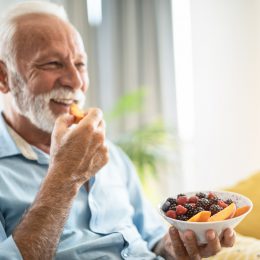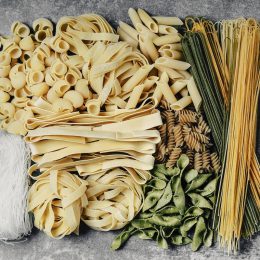Today’s Challenge: Eat Cleaner
Learn which fruits and vegetables are least likely to be tainted with pesticides—and the right way to wash produce.
Do you already make an effort to eat plenty of disease-fighting, energy-boosting fruits and vegetables? Terrific. In this Fit for Life Challenge video, fitness expert David Jack shares how the Clean Fifteen and Dirty Dozen lists of produce can help you make better choices at the grocery store.
Each year, about 48 million Americans get sick from contaminated foods, according to the Centers for Disease Control and Prevention. And dirty produce—which can contain bacteria and pesticides—is a big culprit. But don’t let that stop you from getting your fill of nutritious fruits and vegetables.
Washing produce can go a long way in helping prevent foodborne illness (more on that later), and when it comes to pesticides, the health benefits of a diet rich in fruits and vegetables far outweigh the risk. If you’re concerned, you may want to consider buying organic options for foods that are often high in pesticides.
Which Foods Have the Least and Most Pesticides?
Every year, the Environmental Working Group (EWG) ranks pesticide contamination of 48 popular fruits and vegetables, sharing the results with the public through their Clean Fifteen and Dirty Dozen lists.
The latest annual report found that nearly 70 percent of non-organic (conventionally grown) samples tested positive for pesticide residue. Some foods had low rates: Only 1 percent of avocado samples revealed detectable pesticides, landing it on the Clean Fifteen. On the other end of the spectrum, a single sample of strawberries harbored 20 different pesticides, placing it on the Dirty Dozen.
One potential reason for the difference? Avocados are protected by a thick skin. Strawberries, on the other hand, essentially have no protective layer and a high pest rate—so they tend to be coated in pesticides.
The Clean Fifteen
EWG’s Clean Fifteen list identifies the non-organic produce least likely to be contaminated with pesticides. It includes:
1. Sweet corn*
2. Avocados
3. Pineapples
4. Cabbage
5. Onions
6. Frozen sweet peas
7. Papayas*
8. Asparagus
9. Mangoes
10. Eggplant
11. Honeydew
12. Kiwi
13. Cantaloupe
14. Cauliflower
15. Grapefruit
* A small amount of sweet corn and papaya sold in the United States is produced from genetically modified seeds. Buy organic varieties of these crops if you want to avoid genetically modified produce.
The Dirty Dozen
The EWG’s Dirty Dozen list identifies the non-organic produce most likely to be contaminated with pesticides. It includes:
Subscribe to our newsletter
It's quick and easy. You could be one of the 13 million people who are eligible.
Already a member? Click to discover our 15,000+ participating locations.
Follow Us
1. Strawberries
2. Spinach
3. Nectarines
4. Apples
5. Peaches
6. Pears
7. Cherries
8. Grapes
9. Celery
10. Tomatoes
11. Sweet bell peppers
12. Potatoes
Do You Still Need to Wash All Produce?
Yes, with the exception of ready-to-eat packaged products. Whether you buy organic or non-organic produce at the grocery store or farmer’s market, the Food and Drug Administration recommends washing it to help get rid of bacteria or pesticide residue. Fruits and vegetables may come into contact with bacteria where they grow, after they’re harvested, during transport, or even at home as you’re preparing them. And as mentioned above, foods grown conventionally rather than organically may have residue from many pesticides.
The Right Way to Wash Produce
First, wash your hands with warm, soapy water. Use cold tap water to wash fruits and vegetables, but don’t use soap. You can also rinse foods in a white vinegar solution by mixing a half-cup of white vinegar in a large bowl of cold water. Use these tips for specific foods:
- Broccoli, greens, potatoes, and foods with uneven surfaces: Soak in a bowl of cold water for one to two minutes. Rinse well.
- Cucumbers, melons, and foods with thick skins: Scrub lightly with a produce brush. Rinse.
- Berries and foods with thin skins: Place berries in a colander. Strawberries can be rinsed in a colander under tap water, but other berries are best rinsed by placing a colander in a bowl of cold water.
- Mushrooms: Wipe with a damp paper towel. Mushrooms will absorb water if soaked.
After washing, drying can help remove additional bacteria or pesticide residue. Pat dry with a clean paper towel. For greens or berries, use a salad spinner.
Did you miss yesterday’s SilverSneakers Fit for Life Challenge posts? Find them here and here. Plus, be sure to connect with us on our Facebook page.



